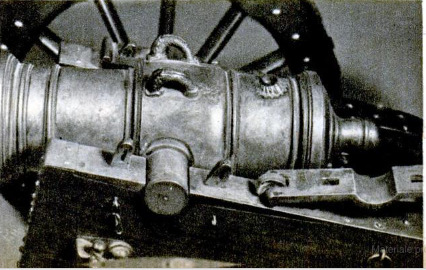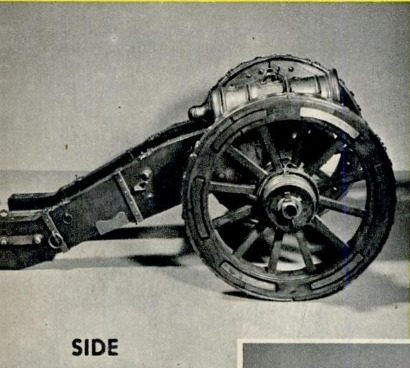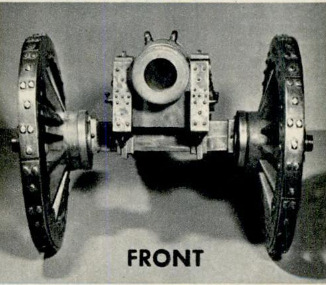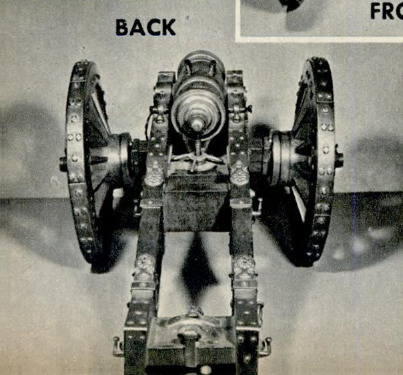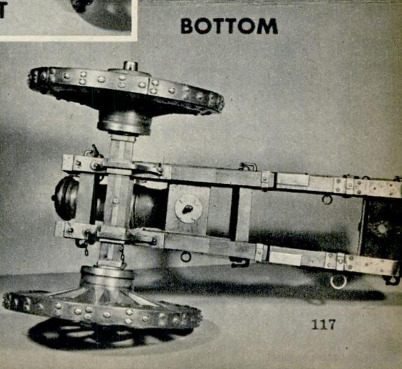Ancient eight-inch howitzer
Item
-
Title (Dublin Core)
-
Ancient eight-inch howitzer
-
Article Title and/or Image Caption (Dublin Core)
-
Title: Ancient eight-inch howitzer
-
extracted text (Extract Text)
-
EXPLOSIVES were discovered around the
middle of the thirteenth century; maybe
Roger Bacon was responsible. Guns were
used during the first quarter of the four-
teenth century. So the field howitzer model
illustrated in these pages represents about
800 years of progress from scratch in the
manufacture of ordnance. We've gone
much further in the last three centuries.
This original cannon was built by the Eng-
lish in the late 1600's or the early 1700's,
approximately a century before the Ameri-
can Revolution.
‘The model, which was made in
England between 1825 and 1830,
is in the collection of Charles B.
King, Larchmont, N. Y. It is
constructed to scale from materi-
als as close to the original as
possible—the cangon of brass and
the carriage of heavy, reinforced,
metal-bound wood.
The over-all length of the
model is 17 1/2 inches, and the bar-
rel length is 7 5/8 inches including the cas-
cabel, that semispherical knob at the rear
end. The outside diameter at the muzzle is
2 7/16 inches, while the bore is 1 3/8 inches. The
outside wheel diameter is 9 3/4 inches, and
the entire length of the axle is 13 1/2; inches.
The original howitzer from which the
model was taken was smooth-bored, of
course. It lobbed a cast-iron ball eight
inches in diameter, but the projectile didn’t
go very far, and it had a low striking ve-
locity, probably not very much greater than
that of a similar-sized bowling ball hurled
down the alley by an expert. No doubt,
however, it was as good as, or better than,
anything the enemy could come back with
in those days. Other early cannon of much
greater size included the famous Dulle
Griete, a 25-inch caliber gun built at Ghent
in the latter years of the fourteenth century.
The howitzer working-scale model illus-
' trated here is only one item in the King
collection, which, as a whole, stands as
one of the finest privately owned groups
of models in the world.
-
Contributor (Dublin Core)
-
Robert F. Smith (Photographer)
-
Language (Dublin Core)
-
Eng
-
Date Issued (Dublin Core)
-
1945-11
-
pages (Bibliographic Ontology)
-
116-117
-
Rights (Dublin Core)
-
Public domain
-
Archived by (Dublin Core)
-
Sami Akbiyik
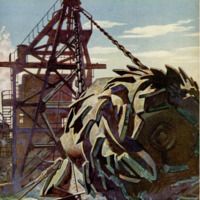 Popular Science Monthly, v. 147, n. 5, 1945
Popular Science Monthly, v. 147, n. 5, 1945


